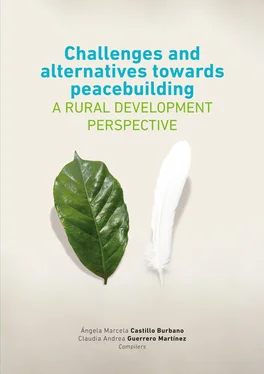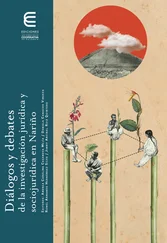Significant progress has also been made in mine clearance tasks, as interventions have already been carried out on more than half of the country’s mined territory. In the legislative field, more than a hundred norms have been approved, including several constitutional reforms, aimed at regulating and executing concrete measures to implement the agreements. Some institutions, such as the Truth Commission, the Missing Persons Search Unit and the Special Court for Peace, are in the process of organization and structuring. It is true that they are not yet fully operational, but it is also true that we are at a very early stage of the post-conflict.
However, many significant challenges still face the peace process. One of the main problems has been the constant breach by the Government of its obligations in the Agreement, as verified by various national and international supervisors (Comisión Internacional de Verificación de Derechos Humanos en Colombia, 2018; Fundación Paz y Reconciliación, 2018a). Regarding the point of “Comprehensive Rural Reform”, there are significant delays due to the lack of coordination and resources, derived fundamentally from the absence of a CONPES document. Thus, there are still no concrete plans for rural development and the Land Fund only has 200,000 hectares of the three million planned. There are also setbacks with regards to the point on illicit crops, as the success of the voluntary substitution programs depends largely on the “Planes de Desarrollo con Enfoque Territorial” (PDET) or “Development Plans with a Territorial Focus”, whose implementation is experiencing serious difficulties.
Since the signing of the Peace Agreement, the “Jurisdicción Especial para la Paz” (JEP) or “Special Court for Peace”, has had to face numerous obstacles and difficulties that have conditioned and limited its proper functioning. Along with the absence of legislative will to regulate its code of procedure, the substantive reforms promised by President Iván Duque have generated great uncertainty regarding its near future.
In addition to the weakness and lack of coordination of the institutional architecture for post-conflict (International Commission for the Verification of Human Rights in Colombia, 2018), there has been a very worrying rise in paramilitary activities and criminal gangs in the regions, as well as the terrible increase in selective killings of community leaders and human rights defenders (Fundación Paz y Reconciliación, 2018a).
The “Zonas Veredales Transitorias de Normalización”
The Peace Agreement foresaw the need for the creation of several “Zonas Veredales Transitorias de Normalización” (ZVTN) or “Transitional Normalization Zones”, and “Puntos Transitorios de Normalización” (PTN) or “Transitional Normalization Spots” in the national territory. These are temporary and transitory areas, defined, delimited and agreed upon by the National Government and the FARC, to carry out the process of leaving arms and beginning the guerrilla group’s transition to legality.
As established in Point 3.1.4.1 of the Agreement, the location of the ZVTN would be agreed upon by both parties and would feature ease of access by road or river. Its limits would correspond to those of the village where they were located and would be of reasonable size so as to allow monitoring and verification by the Monitoring and Verification Mechanism and the fulfillment of the objectives of the ZVTN, with the references of these limits being more specifically anchored to geographical features or characteristics of the local terrain.
In the department of Nariño, two ZVTN were established: one in Policarpa and the other in Tumaco. Although the municipality of Policarpa is located in Andean territory and that of Tumaco on the Pacific coast, both territories had two important factors in common; high rates of violence derived from the armed conflict with a constant presence of armed actors, and a high percentage of their inhabitants economically dependent on the cultivation of illicit crops –basically coca– or other activities linked to drug trafficking. These elements, together with conditions of poverty and the absence of effective state control, made them two particularly complex territories.
After a pre-grouping period, the guerrillas moved towards the two ZVTN in January 2017. In both areas, the basic infrastructure was found to be severely inadequate for the task at hand, which affected the minimum living and safety conditions of the ex-combatants. Under the supervision of the Tripartite Monitoring and Verification Mechanism, they remained there carrying out the essential task of adaptation until the conversion of the ZVTN into “Espacios Territoriales de Capacitación y Reincorporación” (ETCR) or “Territorial Spaces for Training and Reincorporation”.
Currently, very few of those remain, as the serious breach by the State of many of its commitments in these territories has prompted a high percentage of the demobilized guerrillas to abandon them. Some went to other areas, others reintegrated into their communities of origin, while a significant number defected or joined some of the criminal organizations present in the areas. In Tumaco, those who remain are still not assured of conditions that cover their basic needs and in Policarpa, the ETCR no longer exists.
The difficult challenge of Nariño
The internal armed conflict has left innumerable victims and unhealed wounds throughout the territory that impede putting an end to the cycle of violence. According to data from the “Registro Único de Victimas” (2018) or “Single Registry of Victims”, there are more than 8,500,000 people registered as victims of the conflict, of which more than 350,000 correspond to the department of Nariño, representing 23% of the department’s total population. This data shows evidence of a thorny issue: a quarter of the Nariñense population are or have been victims of the internal armed conflict.
The victims in the general regional context, and Nariño in particular, are mostly indigenous, Afro-descendant and campesino populations. While it is true that ethnic communities have formally been allocated a special protection of their rights, they have substantively been victims of their systematic violations. The State has repudiated its responsibility over them and, in most cases, they have suffered double victimization, since their basic needs and the violations of their rights have been ignored.
Hence, it is necessary to reconsider, not only at the national level but also from the regional institutional sphere, what should be the proper treatment of the victims in order to avoid their revictimization, tending to the reparation of their rights in an integral way so that not only their condition as victims, but also the historical, economic and political factors that placed them at a disadvantage, compared to other groups within the population, are taken into account. Therefore, talking about the rights of victims and their reparation necessarily implies an intersectional approach.
In addition to the above, despite the fact that the FARC-EP abandoned their arms and began its process of reintegration into civilian life, there have been other armed groups of paramilitary origin, together with criminal gangs and foreign cartels, who are contesting territorial control, especially in relation to drug trafficking. In the absence of territorial control exercised by the FARC, the conflict has intensified. With this, the number of victims in the regions near the Pacific has increased, in contrast to the situation in other territories of the country where this number has decreased. As the “Fundación Paz y Reconciliación” or “Peace and Reconciliation Foundation” points out, one of the most relevant indicators, when analyzing the security conditions in the post-conflict stage, is the number and rate of homicides. It can be observed that in the four main cities and the rest of the country there was a decrease from year to year, while they have risen slightly in post-conflict areas (2018a).
Читать дальше












